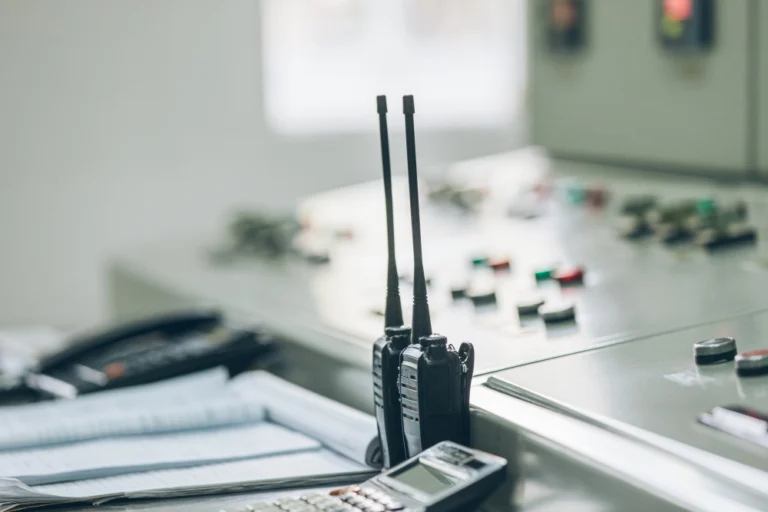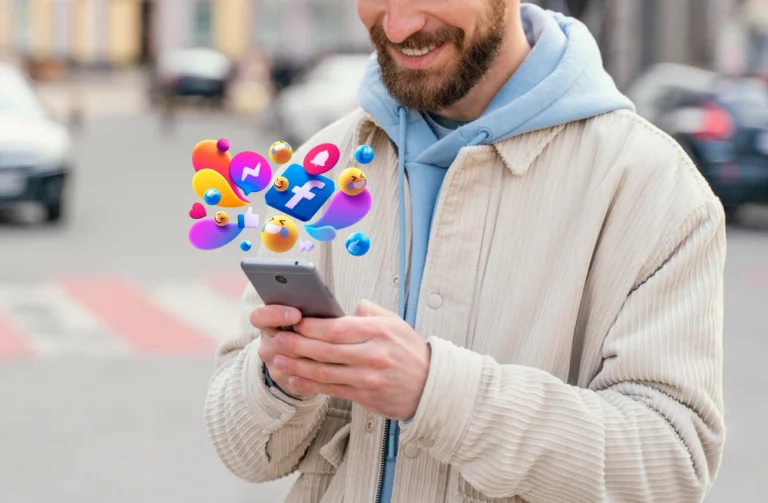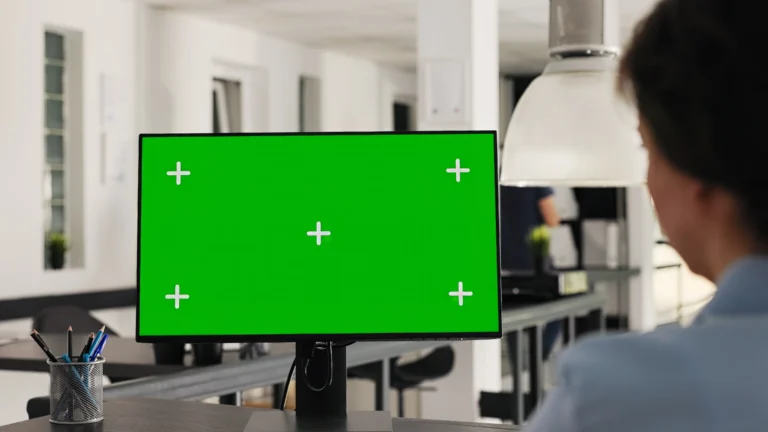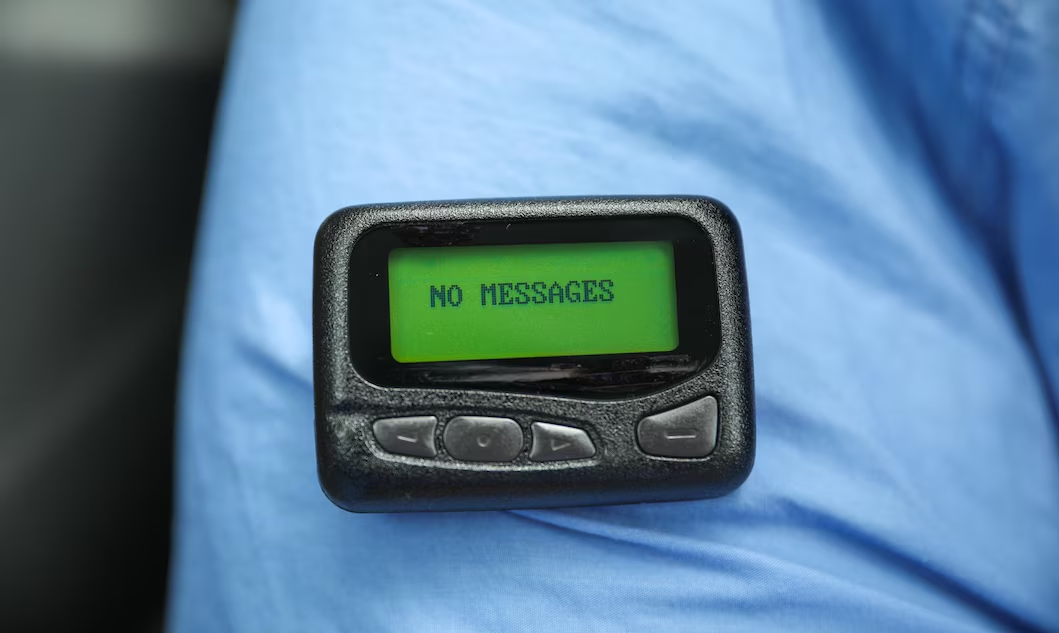
Remember the insistent chirp? That sudden beep-beep-beep cutting through the classroom silence or echoing in a quiet hallway? Or maybe the urgent vibration against your hip? That little plastic box, clipped proudly (or sometimes hidden discreetly) on a belt or tucked into a pocket, was the sound of connection in the 80s and 90s. The communication evolution from simple pager codes to the flood of push notifications we experience today illustrates how technology has reshaped human interaction in profound ways.
It was the pager, or “beeper,” the precursor to the constant connectivity we know today.
Before smartphones made us perpetually available, the pager was a technological marvel . It represented freedom – you could be reached anywhere, untethered from a landline. But it also demanded action: a cryptic number flashing on a tiny LCD screen meant finding a payphone (remember those?) and returning the call .
It was a different kind of “instant” communication – one with built-in delay and a certain mystique. Let’s take a journey back, exploring the evolution from those simple beeps to the relentless stream of push notifications that define our modern communication landscape.
The Dawn of the Beep: Pagers Take Hold
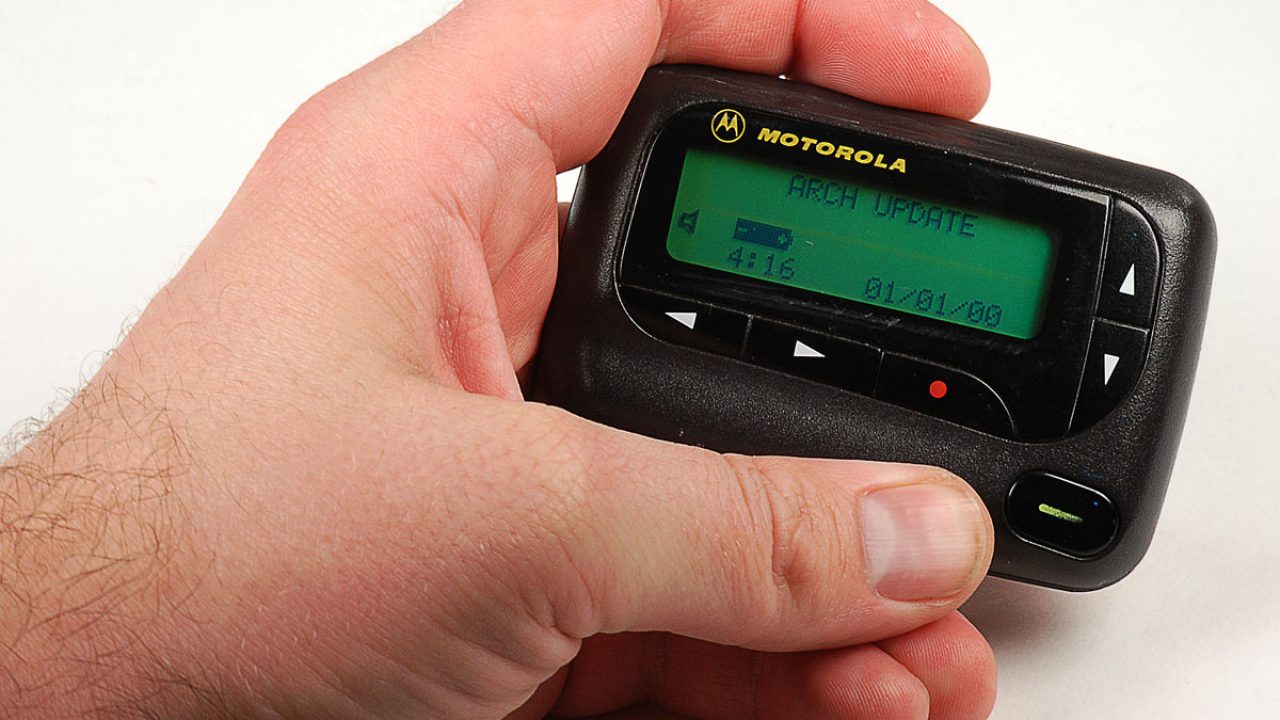
While the concept of one-way radio communication existed earlier (like the Detroit Police Department’s system in the 1920s!), the pager as we commonly remember it began to take shape in the mid-20th century . Al Gross patented a telephone pager in 1949, and early versions were used primarily by doctors in New York City in the 1950s .
Motorola played a key role, coining the term “pager” in 1959 and launching the iconic “Pageboy I” in 1974 . This early model didn’t even have a display; it simply alerted the user with a tone, signifying they needed to call their service or a predetermined number . It was a tether, albeit a wireless one, back to important information.
Why pagers initially took off:
- Portability: For the first time, professionals like doctors, emergency responders, and field technicians could be reached reliably while away from a desk phone.
- Urgency: A page signaled importance. It wasn’t casual chatter; it was a call to action.
- Simplicity: Early pagers did one thing: alert you. This focused functionality made them reliable.
- Cost-Effectiveness (Initially): Compared to the nascent and incredibly expensive car phones or early mobile “bricks,” pagers offered a more accessible way to stay connected .
By 1980, there were over 3 million pager users worldwide, but the technology truly exploded in the late 80s and 90s with the advent of wide-area paging, alphanumeric displays, and falling prices . It moved beyond professionals and into the hands of the masses, becoming a status symbol for teens and young adults.
The Evolution of Connection: Beepers, Texts, and Beyond

The journey from a simple beep to a constant stream of information was rapid and transformative.
- Numeric Pagers (Late 80s/Early 90s): The classic beeper. Displayed the phone number of the caller, sometimes preceded by cryptic codes. This era birthed “beeper code”.
- Alphanumeric Pagers (Mid-90s): A major leap! These could display actual text messages, usually relayed through an operator or a dedicated service . Messages were short, often abbreviated.
- Two-Way Pagers (Late 90s): Devices like the Motorola PageWriter allowed users to send pre-set replies or even type short messages using tiny keyboards. This bridged the gap towards mobile phones .
- SMS (Short Message Service) Takes Over (Late 90s/Early 00s): As mobile phones became smaller and more affordable, SMS became the dominant force. The first SMS was sent in 1992 (“Merry Christmas”) . Early limitations included:
- 160-character limit (a standard set back in 1985!)
- Network restrictions: Initially, you could often only text people on the same mobile network .
- T9 Text Input: The predictive text system using the numeric keypad. A skill honed by millions, requiring multiple key presses per letter. Do you remember the frustration (and speed) of T9?
- Instant Messaging (Late 90s/Early 00s): Platforms like ICQ (1996), AIM (AOL Instant Messenger, 1997), and MSN Messenger (1999) brought real-time, computer-based chat to the masses . Buddy lists, away messages, and screen names defined a generation’s online social life.
- The BlackBerry Boom (Early-Mid 00s): RIM’s BlackBerry devices revolutionized mobile communication for business users, offering push email (a concept pioneered by them in 2003) and a full QWERTY keyboard for efficient typing . The blinking red light was an icon of importance.
- Smartphones & Push Notifications (Late 00s – Present): The launch of the iPhone in 2007 and the rise of Android changed everything. Apple launched its Apple Push Notification Service (APNS) in 2009, followed by Google’s Cloud to Device Messaging (C2DM) in 2010 (later GCM, now FCM) . Apps could now send alerts directly to users’ devices, bypassing the need for SMS or constant checking. This led to the “always-on” notification culture we live in today.
“Technical” Specs: How We Connected Through Time
Let’s compare the “user experience specs” of these communication methods:
| Feature | Pager (Numeric/Alpha) | SMS (Early Mobile) | Early IM (AIM/MSN) | Push Notifications (Modern Smartphone) |
| Device | Dedicated Pager | Feature Phone | Desktop/Laptop Computer | Smartphone/Tablet/Watch |
| Immediacy | Near-instant alert | Near-instant delivery | Real-time (if online) | Instant (usually) |
| Response Method | Find phone to call back | Type reply (T9/Keyboard) | Type reply (Keyboard) | Tap notification, type reply, quick actions |
| Message Length | Numbers/Short Alpha (limited) | 160 chars (GSM std.) | Variable (longer) | Variable (often short preview) |
| Input Method | Caller’s phone/Operator | T9/Multi-tap, later QWERTY | Full Keyboard | Touchscreen Keyboard, Voice |
| Cost Model | Monthly Service Fee | Per message (initially) / Plan | Free (with internet access) | Included with App/Service/Data Plan |
| Rich Media | None | None (SMS), later MMS | Emoticons, later file txfr | Images, Video, Buttons, etc. |
| “Always On”? | Yes (Receiving) | Yes (Receiving) | Only when logged in | Yes (App background refresh) |
| Urgency Signal | Loud Beep/Vibration | Tone/Vibration | Sound/Window Flash | Tone/Vibration/Banner/Badge |
The evolution clearly shows a trend towards richer media, increased immediacy, and perhaps most significantly, a shift from a pull/action model (pager requires finding a phone) to a push/interruption model (notifications demand attention now).
Cultural Impact: Codes, CrackBerry, and Constant Connection
Each stage of this evolution left a distinct cultural mark:
- Pager Culture (90s):
- Status Symbol: Especially for teens, having a pager signaled social connection and importance .
- Beeper Codes: A cryptic language emerged to convey messages using numbers (e.g., 143 for “I love you,” 911 for emergency, 07734 for “hello” upside down) . This was partly efficiency, partly a way to keep messages private from prying eyes .
- Urgency & Mystery: A page demanded an immediate callback, creating a sense of urgency. The mystery of who was paging you added a thrill .
- Association: Pagers became associated (sometimes unfairly) with certain professions, including doctors and, in pop culture, drug dealers, due to their untraceability compared to early phones .
- SMS & T9 Culture (Early 00s):
- New Language: Textspeak (LOL, BRB, OMG) emerged due to character limits and the effort of T9 input.
- Shift in Immediacy: Communication became more casual and frequent, less urgent than a page.
- Thumb Dexterity: A generation developed impressive speed navigating numeric keypads for texting.
- IM Culture (Early-Mid 00s):
- Smartphone & Push Notification Culture (Late 00s – Present):
- Always Connected: The default state shifted from offline to online. Push notifications ensure we’re constantly aware of updates, messages, and alerts.
- Notification Overload & Fatigue: The sheer volume of notifications from numerous apps leads to desensitization, stress, and difficulty focusing . We now need tools within the phone (like Focus modes) to manage the interruptions the phone creates .
- Blurred Boundaries: Work and personal life blend as emails, messages, and work app notifications follow us everywhere.
- FOMO (Fear of Missing Out): Constant updates fuel anxiety about missing out on social events, news, or messages.
From the deliberate act of checking a pager to the involuntary glance at a buzzing phone, our relationship with communication technology has fundamentally changed our social interactions, work habits, and even our attention spans.
Collector’s Corner: Paging the Past
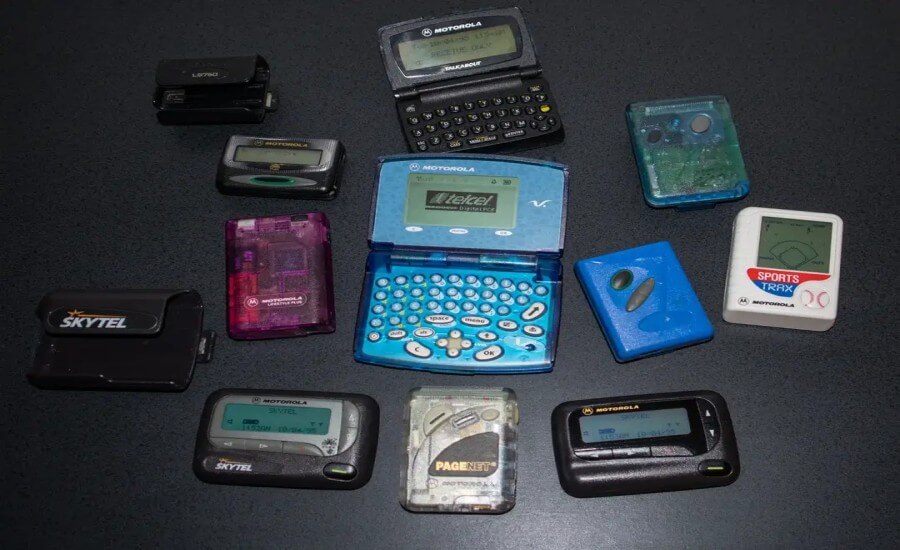
Yes, people collect pagers! While not as mainstream as vintage computers or gaming consoles, there’s a niche market for these retro communication devices .
- What to Look For: Iconic models from Motorola (like the Pageboy, Bravo series), Skytel, or other popular brands from the 80s and 90s. Clear plastic or brightly colored models are often sought after. Two-way pagers like the PageWriter are also interesting.
- Condition: Working condition is a plus, but often these are collected for display. Original boxes or belt clips increase value.
- Value: Most common pagers are relatively inexpensive, often found for under $50 on sites like eBay . Rarer models, mint condition items, or those with cultural significance might fetch more.
- Functionality: Keep in mind that the pager networks required for these devices to actually receive messages are largely defunct for consumer use, though specialized networks still exist for emergency services and specific industries . So, collecting is mainly about the nostalgia and design.
Finding early mobile phones (like classic Nokias) or BlackBerry devices is also popular among retro tech enthusiasts. They represent tangible milestones in the communication revolution.
Why We (Sometimes) Miss the Beep

In an age of notification overload, what aspects of the pager/early mobile era might we feel nostalgic for?
- Defined Boundaries: A pager signaled a need to connect, but you controlled when and how you responded by finding a phone. There was a built-in buffer. Smartphones demand instant acknowledgement.
- Less Interruption: Communication was less pervasive. You weren’t bombarded with constant, often trivial, updates. Life had more moments of disconnection.
- Anticipation & Mystery: The delay between receiving a page and finding out who called and why added a layer of anticipation missing from instant previews .
- Simplicity & Focus: Pagers and early phones did one or two things well. They weren’t portals to infinite distraction like modern smartphones.
- Tangibility: Like the Blockbuster card, the physical pager itself, the specific beep, the feel of the buttons – these sensory details create strong nostalgic links.
We don’t necessarily miss the limitations (like struggling with T9 or hunting for payphones), but we might miss the intentionality and the breathing room that older communication methods inadvertently provided. The constant buzz in our pocket today can feel less like connection and more like a demand.
The Unending Conversation: Legacy of the Buzz

The evolution from pagers to push notifications is a story of accelerating connection and shrinking distance. Each step – the beep, the text, the instant message, the notification – brought us closer, made communication faster, easier, and richer. Pagers freed us from landlines, SMS untethered text from computers, IM made digital chat real-time, and smartphones put a universe of communication possibilities into our pockets.
But this relentless progress has come at a cost. We traded the deliberate pace of pagers for the constant chatter of notifications . We gained instant access but perhaps lost some control over our attention and boundaries. The journey highlights a fundamental tension in technology: the drive for efficiency and connection often clashes with our need for focus and mental space.
As communication technology continues to evolve (think wearables, augmented reality, brain-computer interfaces), the lessons from the pager era remain relevant. How do we manage the flow of information? How do we balance connection with presence? How do we ensure technology serves us, without overwhelming us? The ghost of the humble beeper reminds us that sometimes, a little delay, a little mystery, wasn’t such a bad thing after all.
